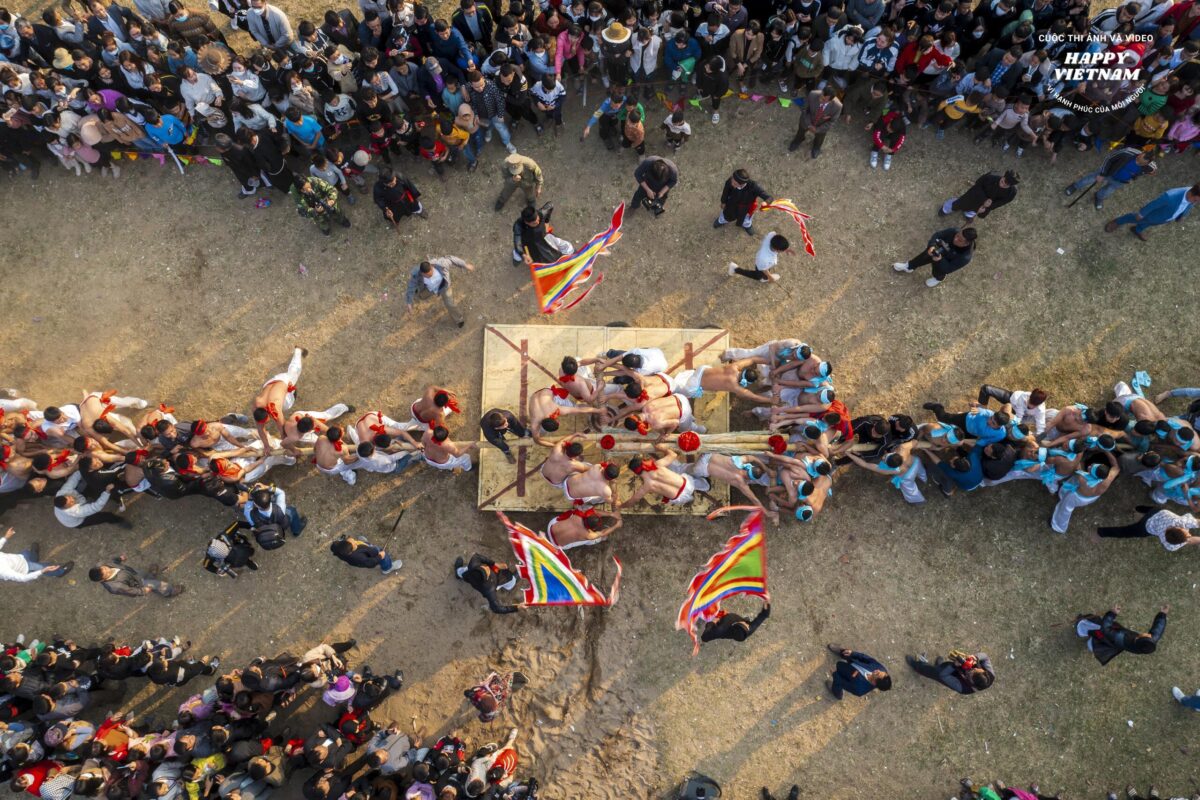Tug-of-war is not just a game; it is also a traditional ritual in various regions of Vietnam and has even been recognized by UNESCO as an intangible cultural heritage. Depending on the area, tug-of-war ceremonies may have unique features, but they are usually held during spring festivals to wish for bountiful harvests, peace, and prosperity.
1. Tug-of-War Ceremony
Meaning: Tug-of-war embodies the spirit of community unity and the wish for a prosperous new year. During traditional festivals, both men and women participate, divided into two opposing teams. This ritual is regarded as a way to bring good fortune and health to everyone and, in many places, to pray for favorable weather and abundant harvests.
Time and Location: Tug-of-war is commonly held in rural areas, especially in northern provinces such as Vinh Phuc, Bac Giang, and Hanoi (Hoa Xa and Van Ha villages). The event often takes place at the communal house courtyard, cultural centers, or open fields.
2. Tug-of-War Game
Rules: Participants are divided into two teams, using a large rope or a sturdy bamboo pole to pull. A referee stands in the middle, giving the signal for both teams to pull in opposite directions. The team that manages to pull the other across the central line wins.
Variations: Some regions organize hand-to-hand tug-of-war, while others use ropes, and a few even use long bamboo poles. In the Hoa Xa festival (Vinh Phuc), there is a unique form of tug-of-war in which no rope is used; instead, a long bamboo pole is planted upright, and the teams compete to pull it to their side.



